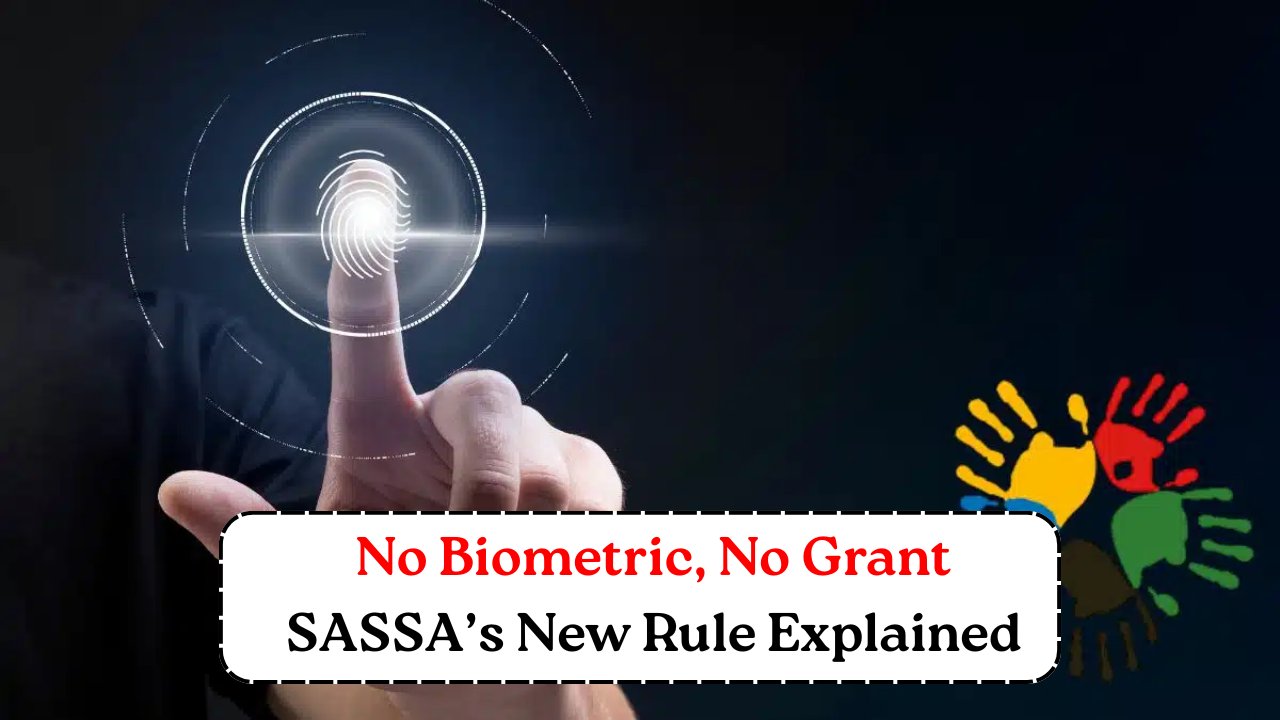Biometric Verification – Biometric verification has now become a crucial requirement for all SASSA grant beneficiaries in South Africa. This new rule has been introduced to ensure that only the rightful and eligible individuals are able to claim their social grants. By linking each beneficiary’s grant application with their biometric details such as fingerprints and facial recognition, the South African Social Security Agency (SASSA) aims to curb fraud, duplicate payments, and identity theft. Many people who previously relied on physical ID documents will now need to undergo this verification process before accessing their monthly payments. While this step may feel like an added inconvenience for some, it actually offers long-term protection and security. Beneficiaries are encouraged to complete their biometric verification as soon as possible to avoid disruptions in payment. Those who miss this requirement might face suspension of their grants until the process is completed, making it critical to stay updated and prepared.
Why Biometric Verification is Important
The introduction of biometric verification for SASSA grants is aimed at protecting the social grant system from abuse and fraudulent claims. In recent years, several cases of identity theft and duplicate payments have been reported, causing massive financial losses to the system. By using advanced biometric technology, SASSA ensures that each beneficiary is uniquely identified, leaving no room for false claims. This system not only reduces corruption but also builds trust among genuine beneficiaries who depend on these grants for survival. Moreover, it provides additional security as beneficiaries will no longer need to worry about losing physical documents like ID cards. The accuracy and reliability of biometrics ensure that payments reach only the intended person, thereby strengthening the integrity of the entire welfare program.
How Beneficiaries Can Complete the Process
Completing biometric verification for SASSA grants is a straightforward process, but it requires timely action from all beneficiaries. Those who receive grants must visit their nearest SASSA office or designated biometric verification center. Officials will capture their fingerprints, facial recognition data, and link these details to their existing SASSA profile. The process usually takes only a few minutes but is vital for future payments. In some areas, mobile verification units have been deployed to reach beneficiaries in rural and remote locations, making the process more accessible. It is important for beneficiaries to carry valid identification documents during this process to ensure smooth registration. Failing to complete this step before the given deadline may result in delayed or suspended payments.
Deadlines and Consequences of Missing Verification
SASSA has made it clear that biometric verification is now mandatory and beneficiaries must comply within the specified timelines. Missing the verification deadline could have serious consequences, including the suspension of grant payments until the process is completed. For many households, these grants are the primary source of income, meaning any delay could create significant financial strain. Therefore, beneficiaries are strongly advised to prioritize this requirement and make the necessary arrangements immediately. Additionally, SASSA has warned that no exceptions will be made for late verification, reinforcing the urgency of compliance. To prevent long queues and last-minute issues, it is recommended that people complete the process well ahead of the deadline. By doing so, they can ensure uninterrupted access to their grants without unnecessary stress.
Support and Assistance Available for Beneficiaries
To help beneficiaries adapt to the new biometric verification requirement, SASSA has set up multiple support channels. Dedicated help desks at local offices are available to answer queries and guide people through the process. Additionally, toll-free helplines and official websites provide step-by-step instructions on how to complete verification. For individuals who are physically disabled or unable to travel, special provisions may be made to assist them at home or in community centers. Community outreach programs are also being conducted to educate beneficiaries about the importance of biometric verification. These support measures are designed to ensure that no eligible beneficiary is left behind. By making use of these resources, people can complete the verification smoothly and avoid losing their much-needed grant payments.
